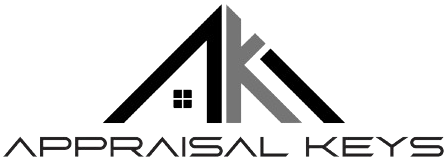For hard money lenders, understanding after repair value (ARV) is essential for making informed loan decisions. ARV is the estimated value of a property after renovations, and getting it right directly impacts the lender’s ability to safeguard their investment. When lenders accurately estimate ARV, they protect themselves from overextending their financing, avoid risky deals, and ensure they’re lending against properties with solid potential. Conversely, an inaccurate ARV can lead to financial setbacks, including funding properties that don’t meet market expectations post-rehab.
What is ARV and Why It Matters?
After repair value (ARV) is a projection of what a property will be worth once all repairs and improvements are complete. This value is critical because it gives lenders a snapshot of the property’s future worth, which directly influences how much they should lend. For hard money lenders, this is a pivotal figure as it informs loan-to-value ratios, risk assessments, and ultimately, profitability.
Accurate ARV appraisals help ensure lenders:
- Avoid over-leveraging properties.
- Have a clear picture of their potential returns.
- Can structure loans that align with the property’s true post-repair value.

Key Components in Determining ARV
Estimating after repair value requires a thorough analysis of various factors:
- Repair Costs – What is the estimated cost to renovate the property to a competitive market standard?
- Current Market Conditions – How are market trends and real estate demand influencing the value of comparable properties?
- Comparable Sales (Comps) – What are similar properties in the area selling for, both pre- and post-renovation?
By understanding these elements, lenders can accurately assess the true potential of a property, ensuring they aren't lending on inflated or undervalued estimates.
The Risks of Inaccurate ARV for Lenders
Misjudging ARV can lead to disastrous outcomes for hard money lenders. Overestimating after repair value could result in the lender offering a loan that’s too high, based on a property that doesn’t meet post-rehab market expectations. Here are some specific risks:
- Financial Losses: Lenders may not be able to recoup their investment if the property fails to sell at the estimated ARV.
- Cash Flow Problems: If repairs exceed the projected budget and the property doesn’t sell for the ARV, lenders can experience liquidity problems, making it harder to finance future projects.
On the flip side, underestimating ARV can cause lenders to miss out on promising opportunities. A property undervalued might lead to a conservative loan that doesn’t fully capitalize on its true market potential, resulting in:
- Lost Opportunities: The lender may pass on a project that could have generated a high return.
- Competitive Disadvantage: In a fast-moving market, lenders who consistently undervalue properties might lose deals to competitors who recognize a property’s potential.
Consider a scenario where a lender overestimates the ARV of a distressed property. After pouring substantial funding into the renovation, the property fails to sell for the projected value, leaving the lender with significant losses. On the other hand, a different lender might underestimate the ARV of a similar property, choosing not to lend on it—only for a competitor to swoop in, invest, and sell the property at a much higher value than initially expected. These examples illustrate the importance of getting ARV estimates right.
Best Practices for Accurate ARV Evaluations
To avoid these costly pitfalls, hard money lenders should adopt the following best practices to ensure they get their ARV assessments right:
1) Thorough Market Research
Lenders need to invest time in understanding the local real estate market. Knowing the neighborhood trends, buyer demand, and economic factors that affect property values is crucial for accurate after repair value estimations.
2) Detailed Property Condition Inspections
Conduct a comprehensive assessment of the property before renovation begins. A clear understanding of the repairs needed will help determine whether the projected ARV is achievable.
3) Comparables (Comps) Matter
Analyze recent sales of comparable properties in the same neighborhood, focusing on those that have undergone similar renovations. Comps provide a valuable benchmark for ARV estimations.
4) Utilize Professional Appraisals
Partnering with certified, experienced appraisers ensures that ARV calculations are based on industry standards and real-time market data. Appraisers bring objectivity and expertise that can safeguard lenders from inaccurate assessments.
5) Leverage Technology and Data Analytics
Modern tools like real estate valuation software can help lenders crunch data more efficiently. These tools analyze market trends, comparable properties, and historical data to deliver a more accurate projection of a property's after repair value.
The Role of ARV in Hard Money Lending
Accurate ARV assessments directly impact loan decisions, particularly in these areas:
- Loan-to-Value Ratios (LTV): Lenders base LTV ratios on the projected ARV. A reliable ARV ensures that lenders don’t over-leverage the property and keeps the loan amount proportional to the property’s future worth.
- Loan Amounts: By having a precise ARV, lenders can allocate the appropriate amount of funding, balancing risk while maximizing return on investment.

ARV also fosters trust between lenders and borrowers. When hard money lenders are known for making accurate ARV assessments, borrowers feel more confident in securing financing, leading to:
- Repeat Business: Satisfied borrowers who have experienced reliable lending based on accurate ARV assessments are more likely to return for future projects.
- Referrals: A reputation for accurate, reliable appraisals spreads quickly in the real estate community, bringing new business to the lender.
Building a Stronger Lending Strategy Through ARV
For hard money lenders, accurate after repair value calculations are the backbone of a sound lending strategy. They protect against financial loss and open the door to more profitable opportunities. By implementing best practices such as thorough market research, working with certified appraisers, and utilizing cutting-edge technology, lenders can stay ahead of the competition and build a reputation for reliability.
Take Control of Your Lending Future Today
The future of your investments depends on how accurately you assess the ARV of the properties you’re lending against. By refining your evaluation strategies and staying up-to-date with market trends, you can protect your portfolio and increase profitability. Ready to enhance your ARV evaluations and safeguard your investments? Contact us today to learn how we can help you make smarter lending decisions with precise appraisals.


